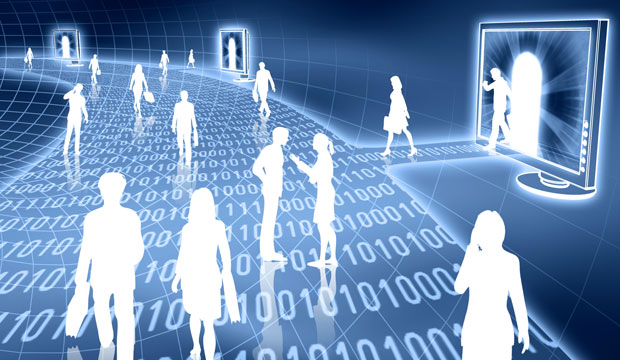Andrew McAfee and Erik Brynjolfesson, who teach at MIT’s Sloan School of Management, started writing about the impact of artificial intelligence and machine learning almost a decade ago. Their early books — The Second Machine Age: Work, Progress, and Prosperity in a Time of Brilliant Technologies and Race Against the Machine: How the Digital Revolution is Accelerating Innovation, Driving Productivity, and Irreversibly Transforming Employment and the Economy — provided deep insights into the way the era we live in would unfold.
A lot of their ideas were on display last week at TrailHeaDX: The Salesforce Developer Conference in San Francisco.
Few executives, even the ones pursuing digital futures for their organizations, have sized up the potential impacts, McAfee said in a recent interview.
Even though they see a lot of disruption coming, I still think that many really smart, well-managed companies are underestimating the scale, scope and speed of disruption this time around.
More Than Money
Perhaps the greatest challenge all leaders face is to do a better job separating threats from mirages, or the things that will and won’t change about running a business in light of advanced technologies. For instance,”… articulating a compelling vision that will attract talent, customers and stakeholders; being true to that vision; and managing the culture that you’ve created to go tackle those visions. Those are deeply human skills, and leaders who are good at them are going to become even more valuable.”
The clear implication is that machines are doing the rote work and humans have to gravitate to the higher value-add activities. That’s what makes Salesforce and TrailheaDX so interesting. From the outset the founders, Marc Benioff and Parker Harris, intuitively understood the importance of culture-building. They’ve always strived to make the business about something bigger than making money or even building a great company.
There’s the company’s famous 1:1:1 business model, for example, which establishes donations of 1 percent of its profit, product and time to charitable causes. While the fundamentals of the model haven’t changed, perhaps in a nod to Brynjolfsson and McAfee, Salesforce has broadened the culture quest to encompass as much of the outside world that is relevant to its mission as possible.
Salesforce execs now talk about the “Ohana,” a Hawaiian word for “family.” As with any well-functioning family, the success of family members is an important focus. This translates into the vision of Salesforce’s Trailhead as a training vehicle for users — but more broadly as an approach to helping people develop the skills needed to secure good paying middle-class-supporting jobs.
Fundamentally, Salesforce may be a very successful technology company, but it is also a strong culture play. In fact, the company and its products apply McAfee’s digital disruption analysis well. Products like Einstein and the Analytics Cloud help customers to grow into a world of relationships dependent on analysis and statistics rather than gut instinct, while simultaneously offering a vision of a culture focusing on the customer and the employee.
Competency, Please
All of this came into focus at TrailHeaDX conference in San Francisco last week. Trailhead, the product, is a self-paced learning and certification environment that teaches all levels of users about the Salesforce platform, Lightning. The platform offers users ways to develop and maintain systems based on no code, some code, or a lot of code, depending on the task and the user’s ability.
More than this, the digital disruption has enabled app developers to take much of the work out of being a customer. We used to talk a lot about the customer experience until we learned that customers value plain old vanilla competency in their dealings with us and not a grand show.
It was a subtle change, and we discovered we can be really good at the blocking and tackling only if we can anticipate customers’ needs, which exposed the need for artificial intelligence and machine learning. By successfully anticipating customers, we can shorten the interaction time and demonstrate our competency.
Note that this change requires building capabilities into software, which is not a trivial undertaking, and which is, frankly, best done by the software itself and not a coder. That’s why the platform has become such an integral part of any software vendor’s arsenal. It’s also why something like Trailhead has become a vital part of Salesforce’s overall offering.
My Two Bits
It all fits together, but we aren’t at our destination yet. The digital disruption should be considered as the mountain we need to climb before we get to the promised land. Platform technology frees us by generating running code and splicing together analytics, process flow, and quite a bit more.
With our new freedom we can devote more resources to dealing with the interpersonal parts of customer relationships that people are good at and machines are not. It would be a mistake to think that we can reap a technology dividend by simply removing people from all of our processes. That’s why, to do the people part we need a people-focused culture within a business, and this includes the people we call “employees.”
So, in my mind, TrailHeaDX was a lot more than a developers’ conference. It certainly was that, but if that’s all you got from it, next time bring your boss and culture visionaries, because even if they can’t write a line of code, the culture part is large.























































